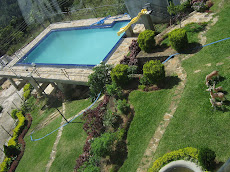Friday, October 16, 2009
Postgraduate Course in Health Informatics - Workshop on Innovations and eHealth
Conducted by
Dr. K R P Chapman – Consultant Surgeon
Dr. Shiromi Arunatileka – IT Consultant
At the PGIM Lecture Hall on 06.10.2009
Case Study
A 24 year old trauma patient admitted to the Emergency Treatment Unit (ETU) in a base hospital in Sri Lanka at 10.30pm on a Saturday. The patient requires immediate intubation and ventilation. The on-call ITU doctor says that no ITU beds are available. He was compelled to make 12 phone calls to various hospitals in the region. After one hour, an ITU bed was available in a hospital 72 miles away.
1. What are the main problems and concerns in this situation?
2. What is your solution using an IT framework to resolve this situation?
Illustrate your solution using a diagram.
3. Give details of the proposed solution briefly discussing various aspects.
4. Justify your answer.
5. Discuss the challenges that you’d come across in implementing the proposed solution taking
into account the Sri Lankan health care system.
Case Study - Answers
1. What are the main problems and concerns in this situation?
a. Maintaining Life support ABCDE
b. Lack of proper communication between two hospitals – i.e.; hotline to ITU
c. Lack of a network and an information system giving available beds
d. Transport problem w.r.t. availability of ambulances
e. The availability of cadre for hospitals
f. Availability of Transfer equipment such as an ambulatory sucker
g. Availability of consultants and relevant specialties in the other hospitals
2. What is your solution using an IT framework to improve this situation?
a. A web based ITU inter-hospital Information Network
b. The system should contain the following information
i. The Total number of ITU Beds
ii. Availability of vacant ITU Beds
iii. Availability of Consultants for different specialties
iv. Facilities available in the Hospital (CT, Ultrasound, etc)
v. The distance between the hospitals and the time taken for transfer
vi. The number of ambulances available and their locations
vii. The type and number of ventilators available
viii. Contact numbers of the relevant specialists on call
ix. The facilities available for receiving patients e.g.; helipad, trauma shock rooms
c. Illustration
3. Give details of the proposed solution briefly discussing the main aspects of the IT solution.
a. Web based data system with secure log in for doctors/nurses
b. Web system should show data on above mentioned area as in 2b
c. How is data uploaded- PDA/Computer/SMS
d. Work out protocols and policies for updating data and managing the system
e. Access rights to whom and why: read/write/edit/delete
f. Central IT administrator or peer to peer?
g. System maintenance/trouble shooting and cadre
h. Connectivity: broadband/HSDPA/ADSL/dialup
i. Platform : Windows/FOSS
j. Simplicity and user friendly inter-phase
k. Language - English
l. Adjuncts : transfer of EMR
m. Electronic Transfer Form (OPD Delay should be avoided) – what was sent with patient e.g. equipment, x-Rays, patient valuables, oxygen cylinders, splints
n. Cadre training in IT and attitude building at all levels
o. Confidence building measures
p. Preoperational and post operational feedback surveys
4. Justify your answer.
Discuss the following:
Benefits to patient
Benefit to Healthcare staff
Benefit to the institution
Cost / Benefit analysis- economics of the solution
Social impact of the solution
5. Discuss the challenges that you’d come across in implementing the proposed solution.
Attitudes/social transformation
Funding :
Sustainability of the proposed system
ITU policy (contradictions between institutions)
Subscribe to:
Post Comments (Atom)




























No comments:
Post a Comment